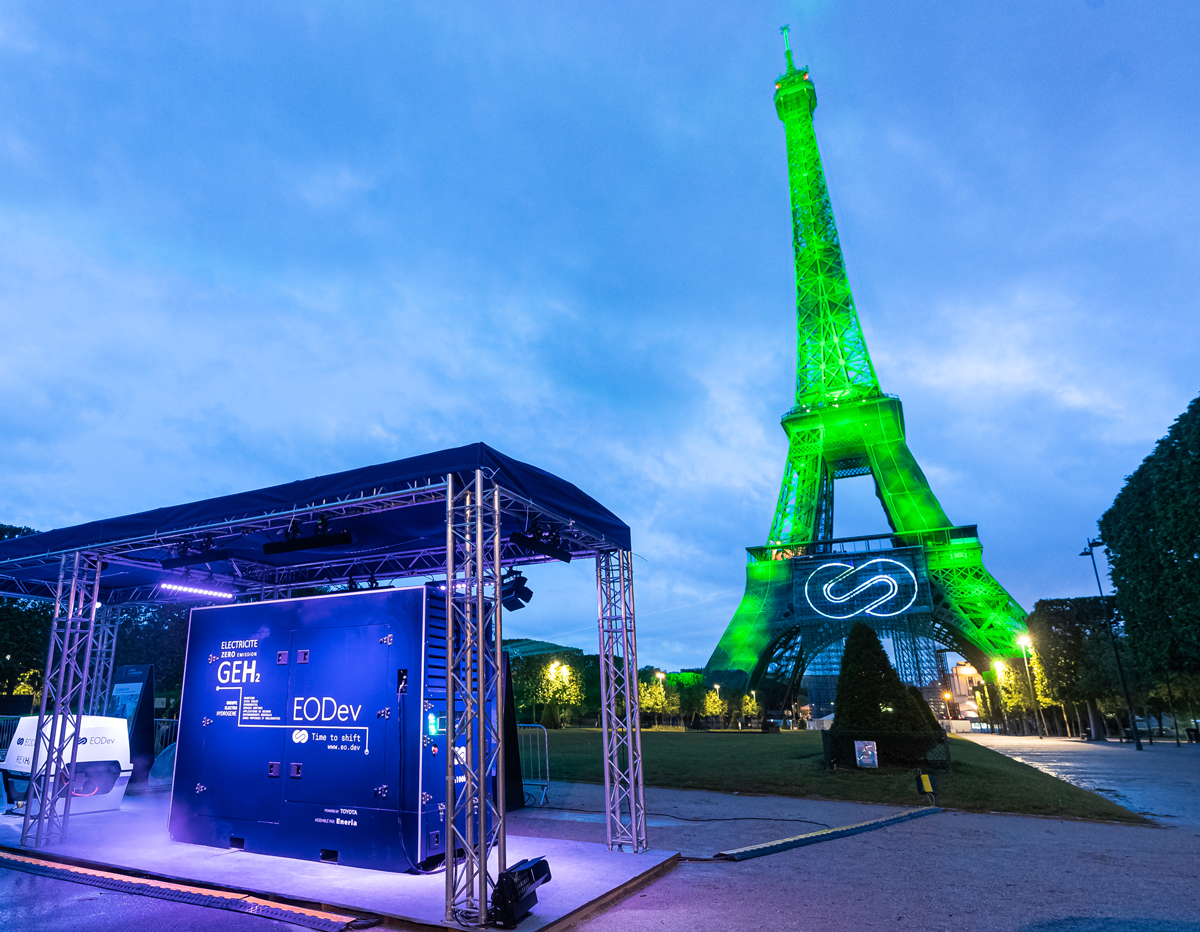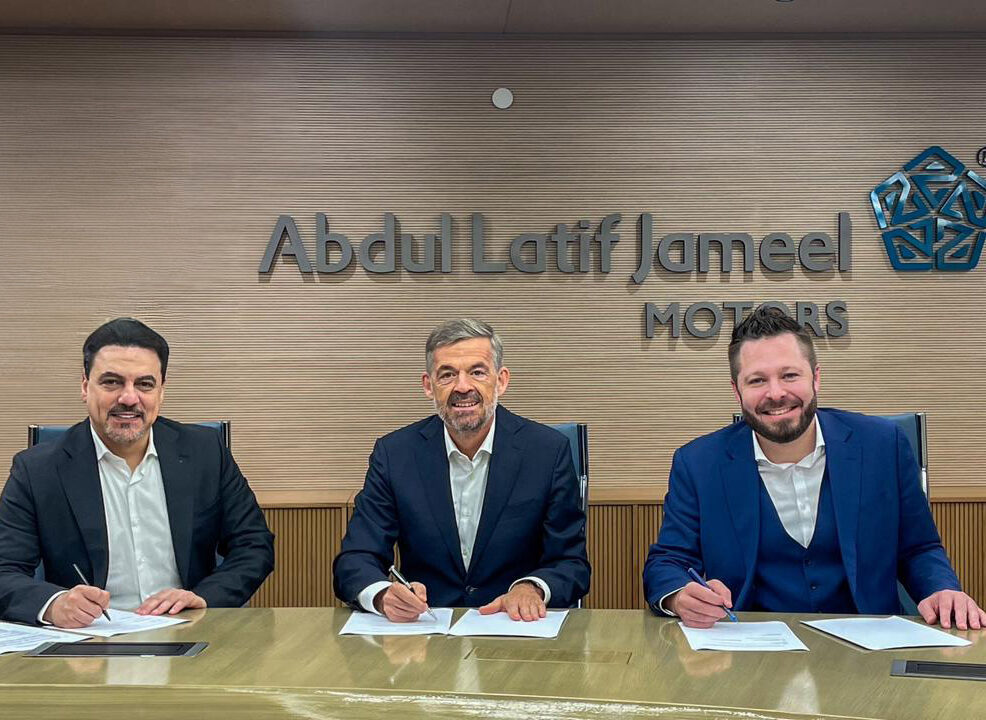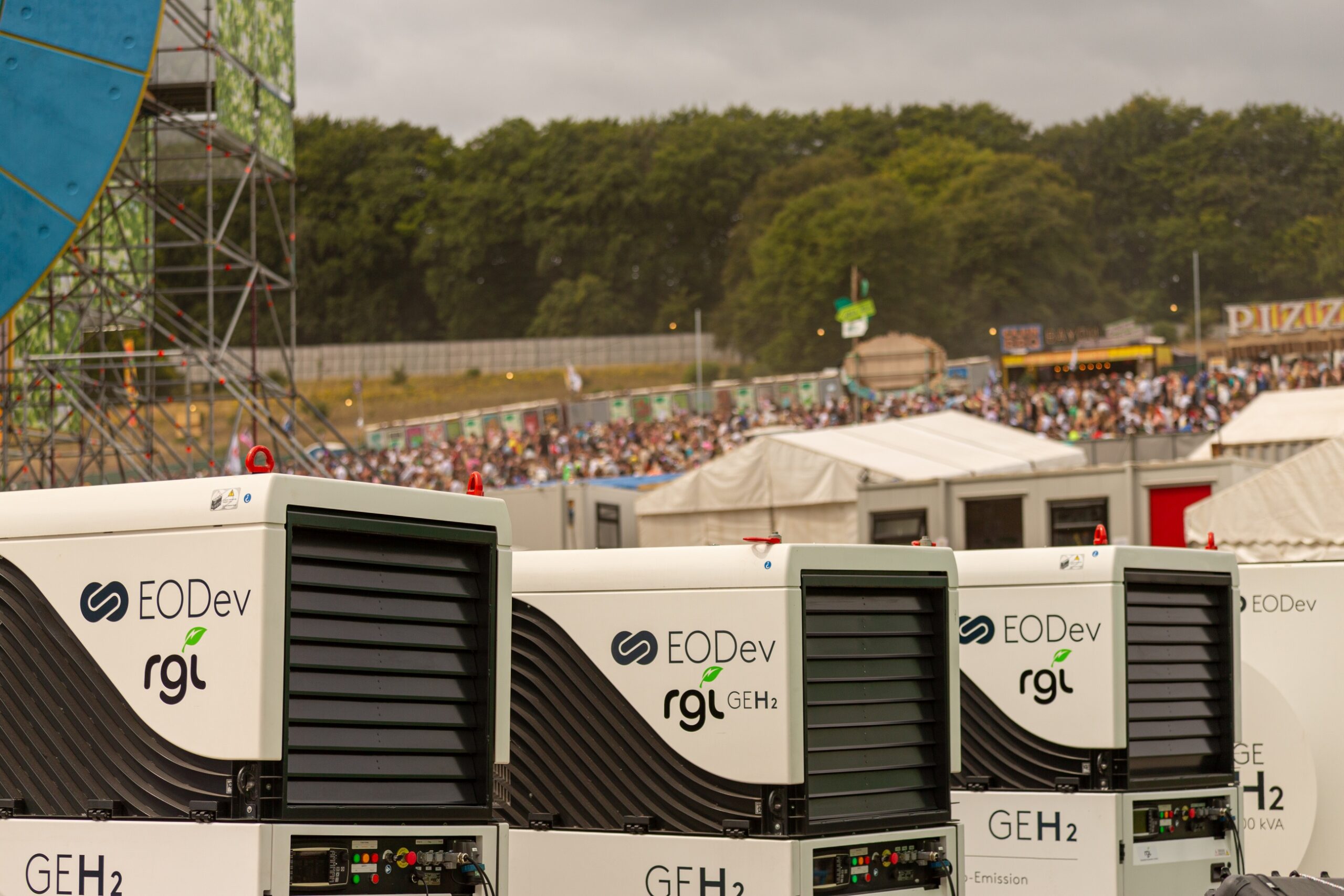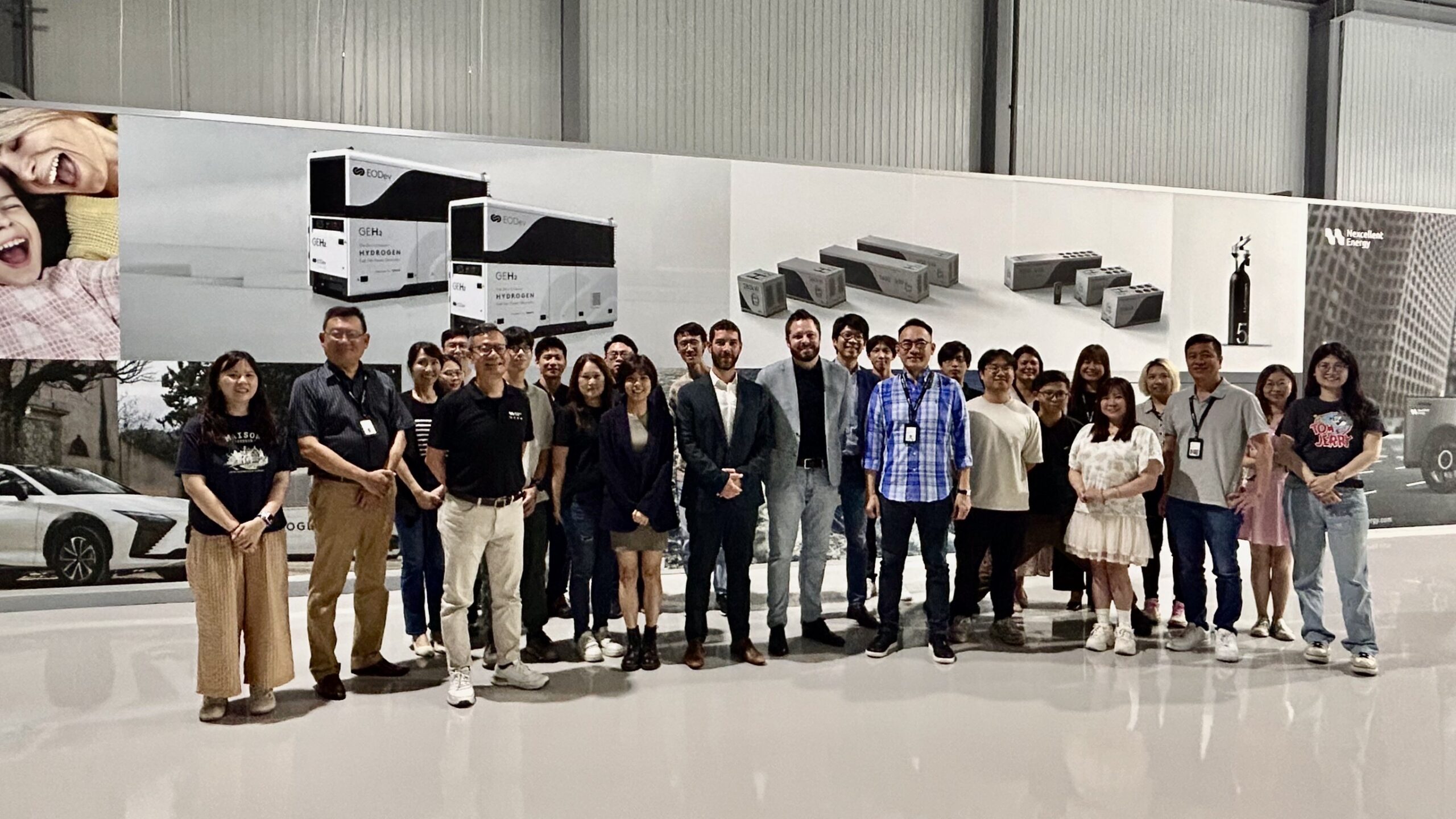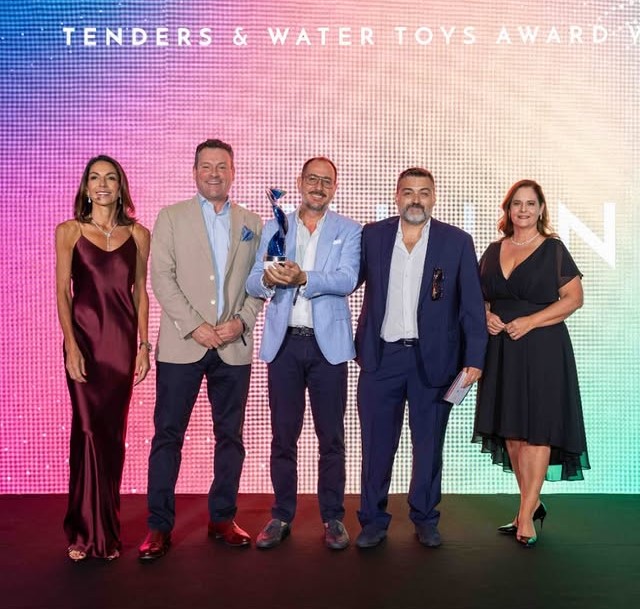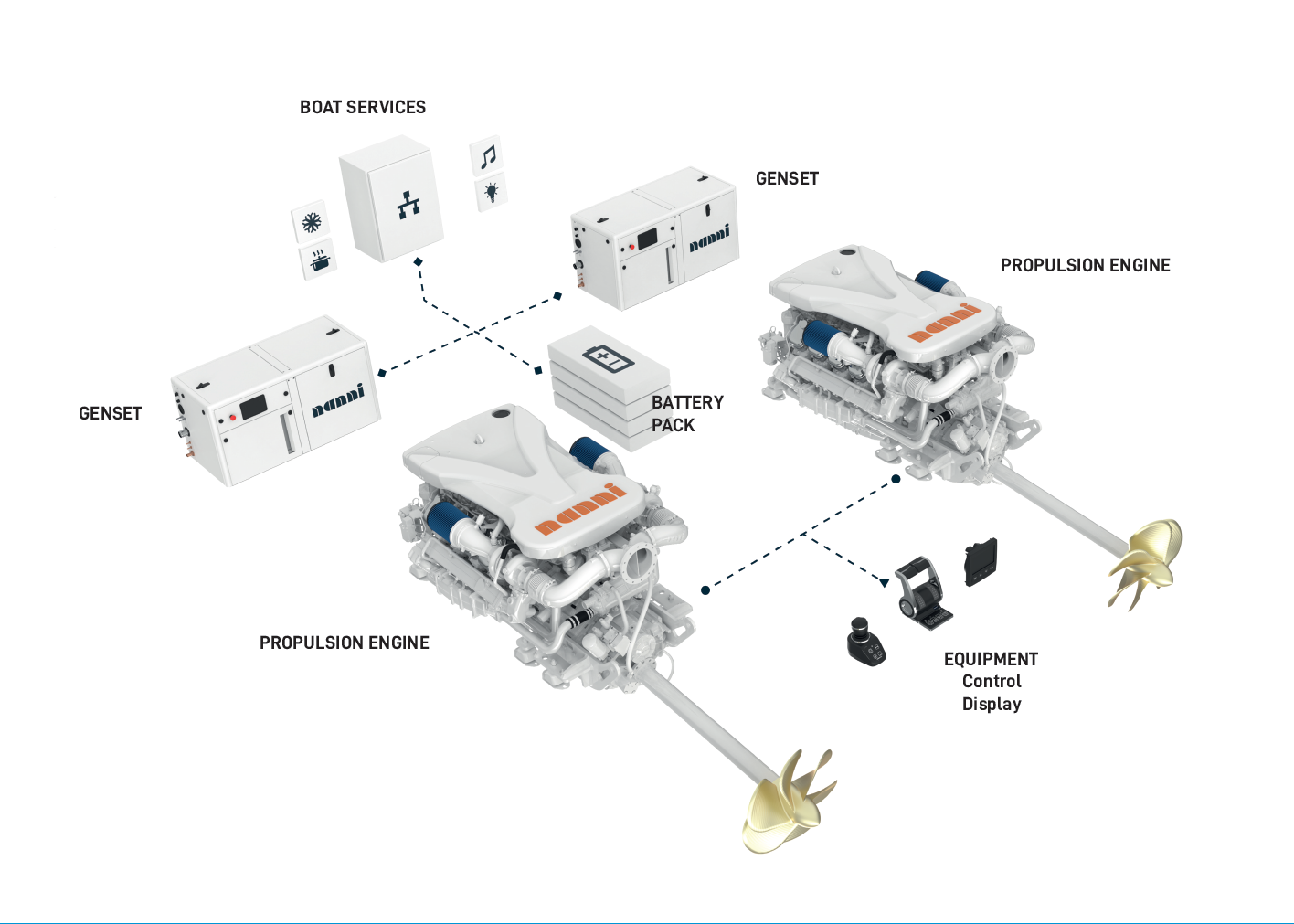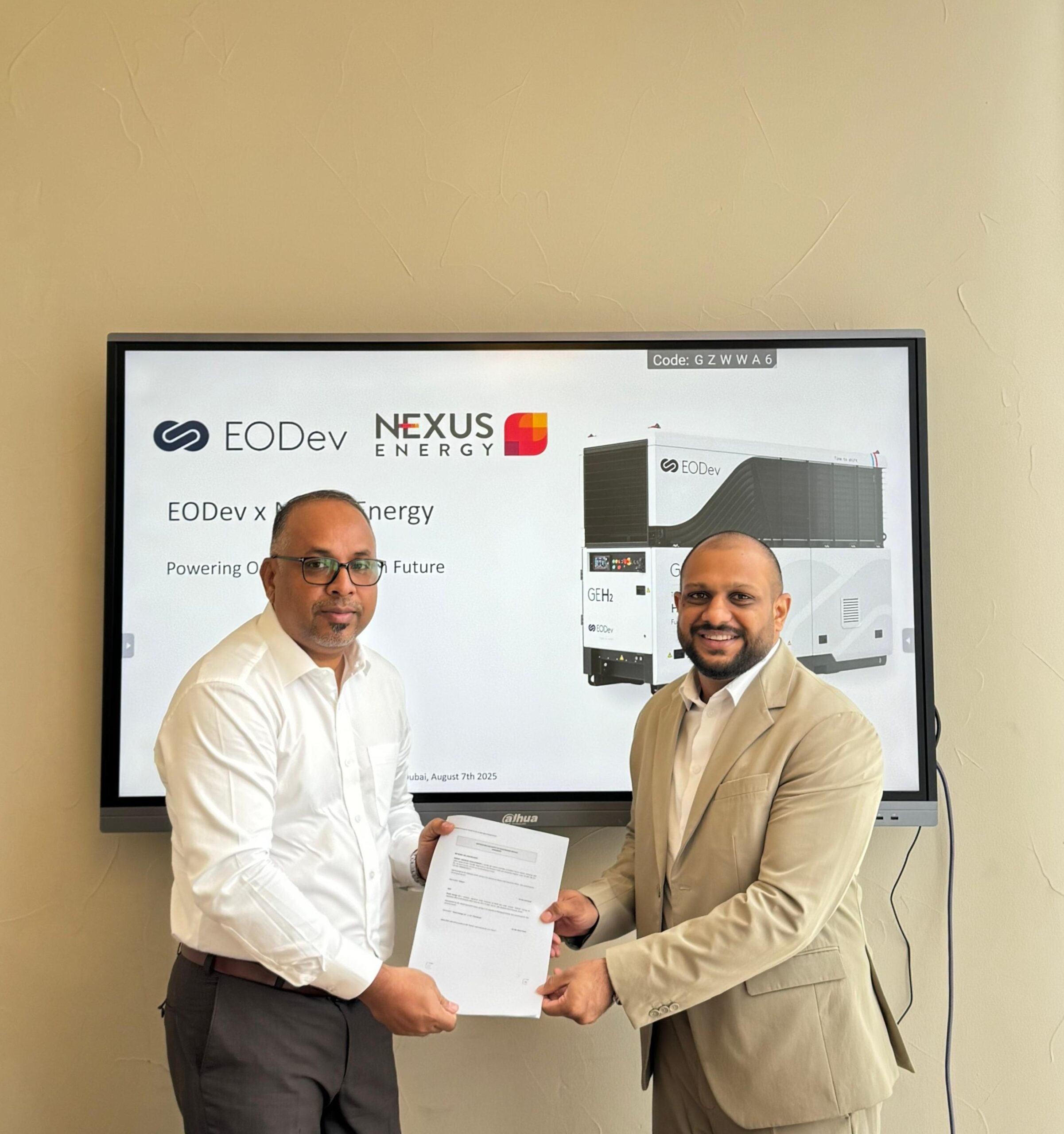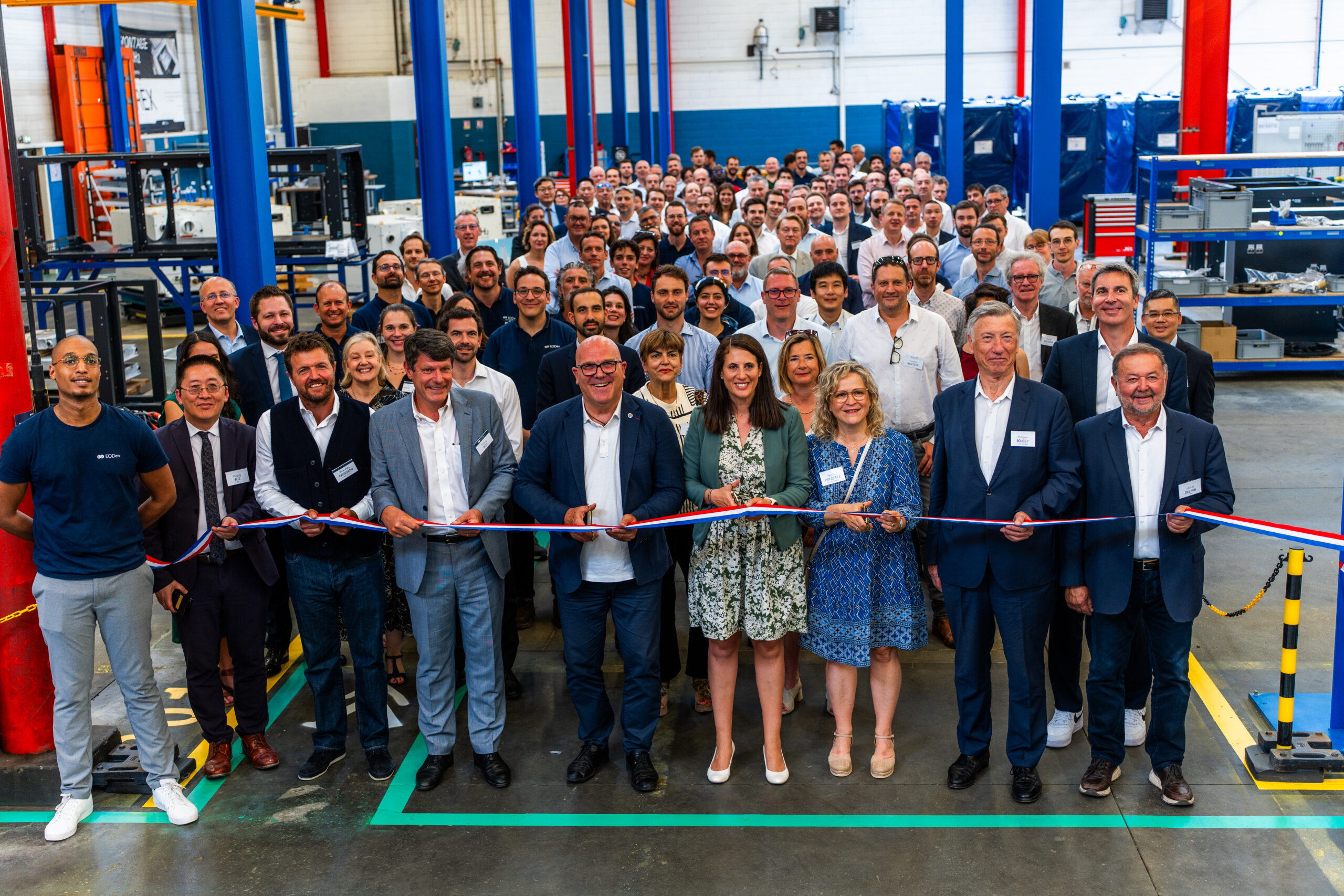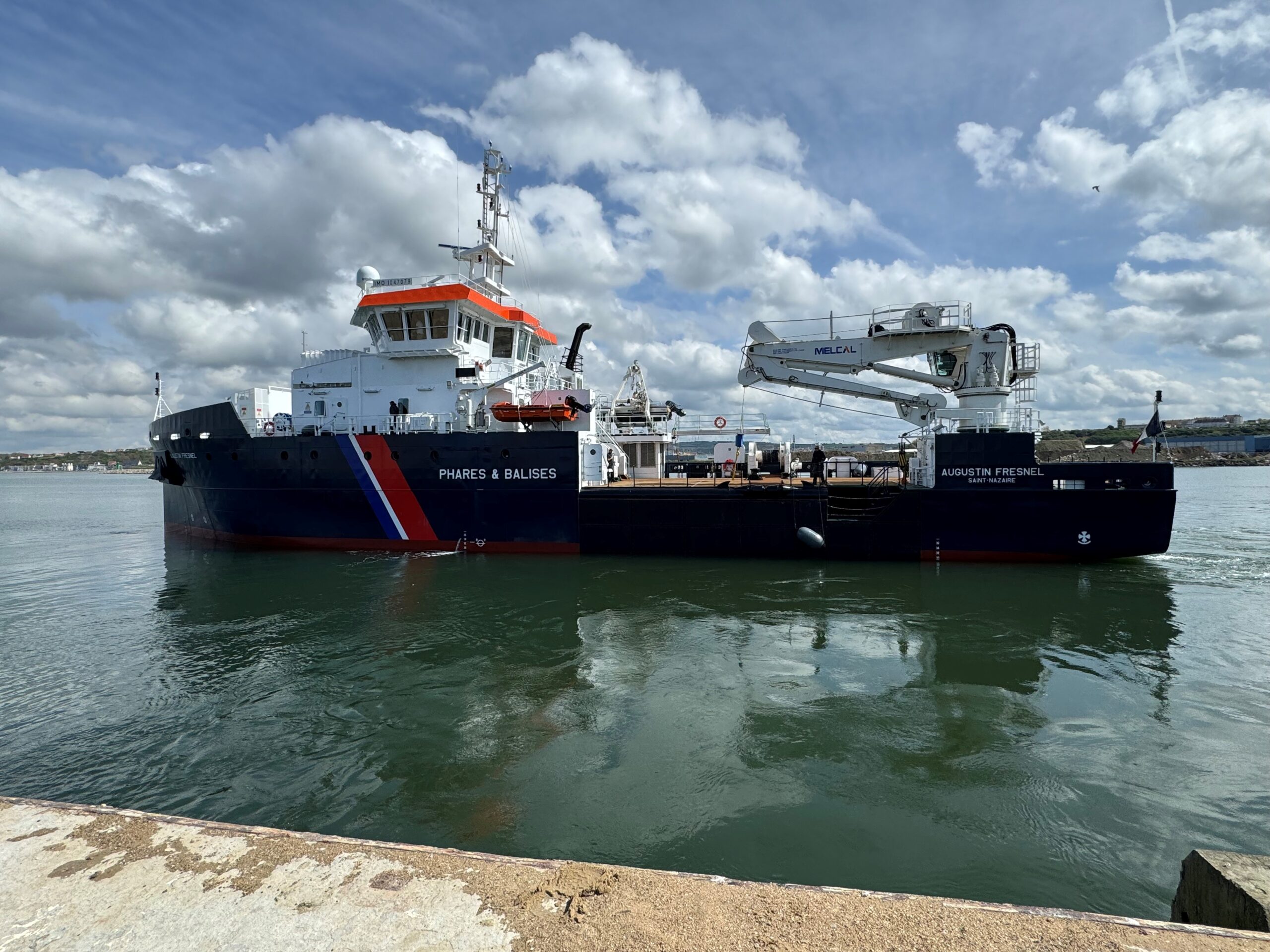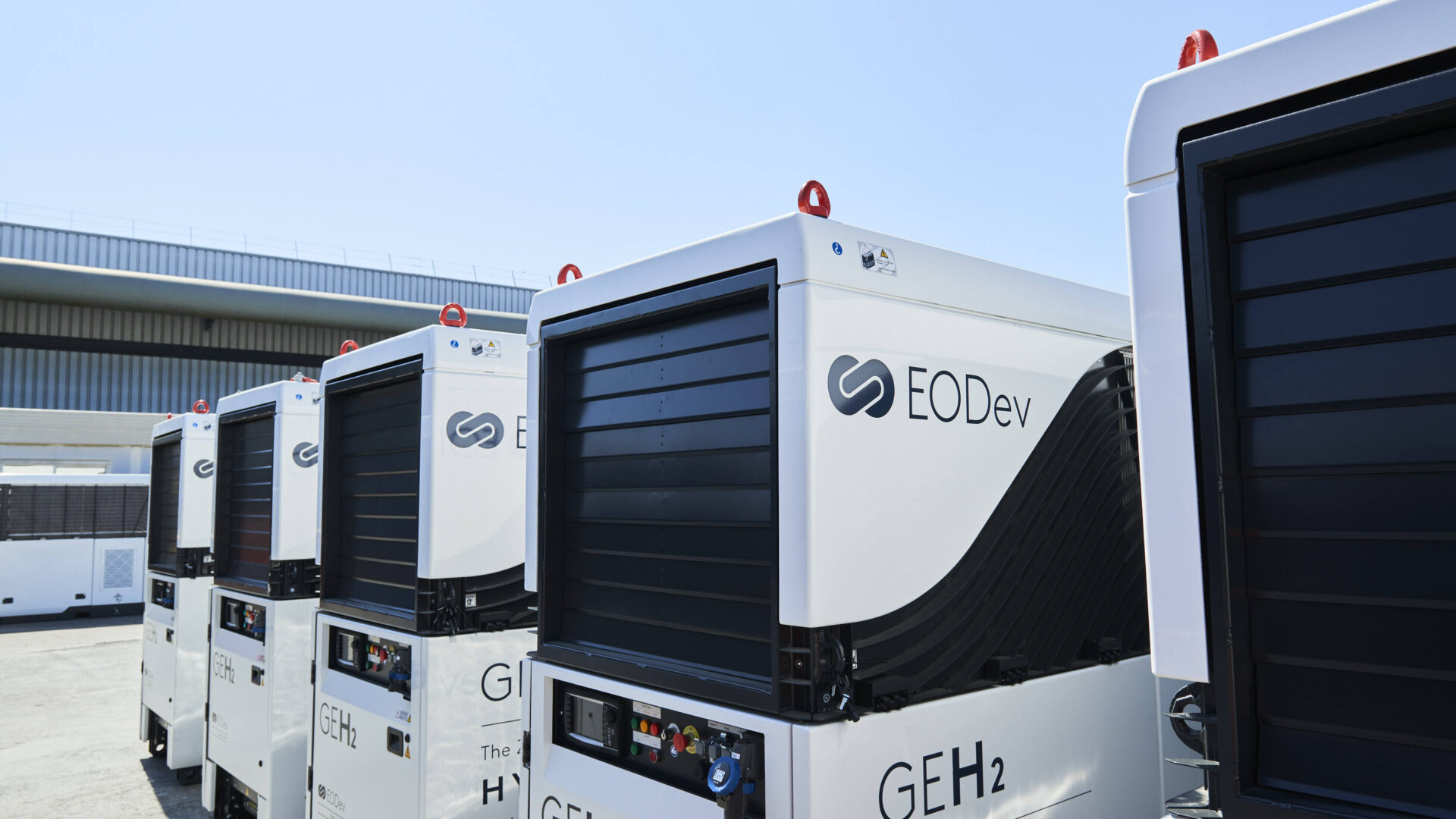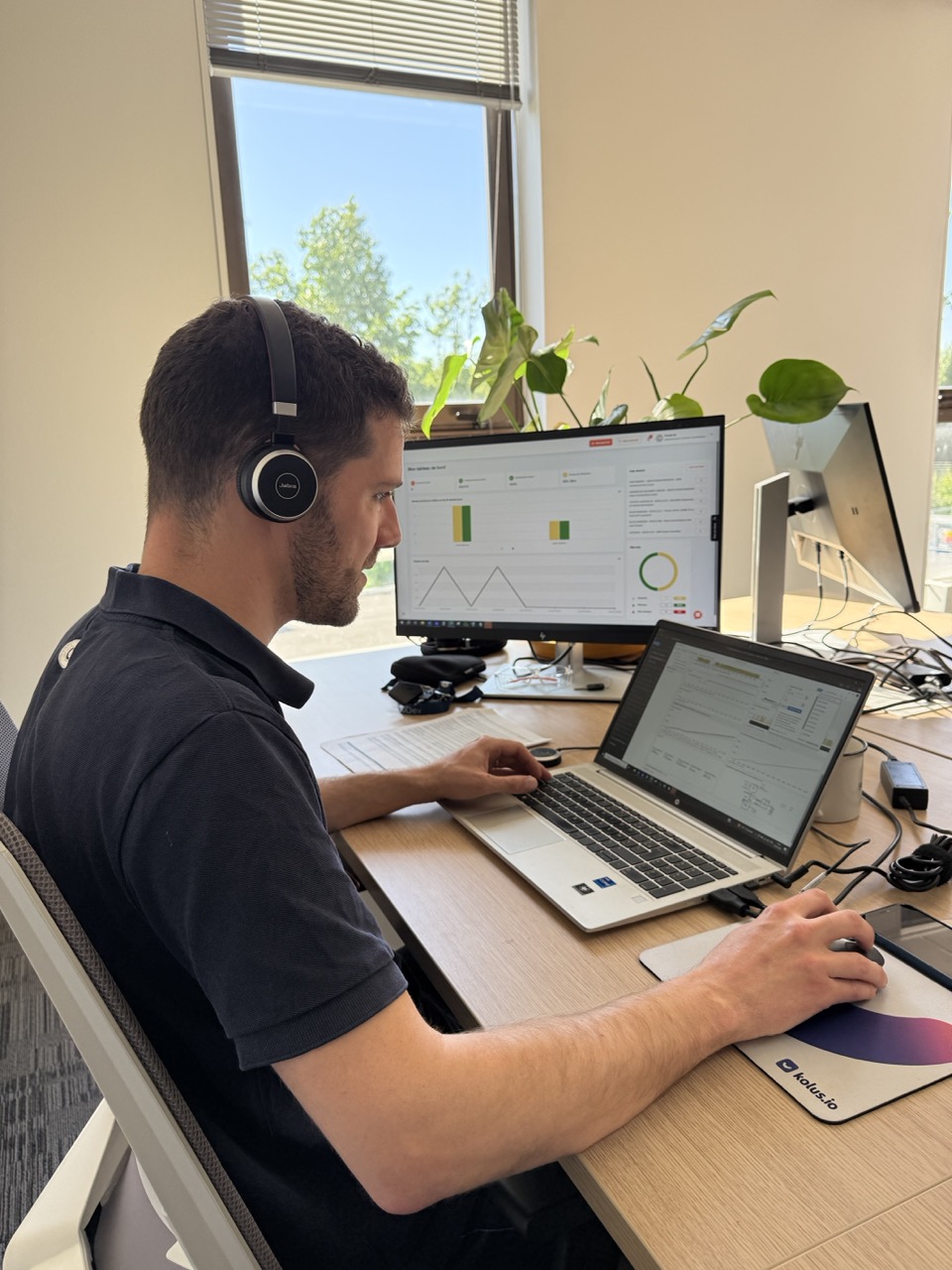On the occasion of the Energy Observer exhibition, from May 20 to 30, 2021 on the Champ de Mars in Paris, the start-up EODev presents its electro-hydrogen generator GEH₂® without emissions or fine particles and replaces diesel generators to supply energy to the exhibition village. The highlight of the event took place on the evening of May 25, 2021, with the use of the GEH₂® as a substitute to the city of Paris electricity grid to light the Eiffel Tower with a visual performance produced by Magnum agency, enhanced by a musical feat composed by Jean-Benoît Donckel from renowned group Air. For the first time in more than 130 years, an alternative solution has enabled the illumination of the most visited monument in the world.
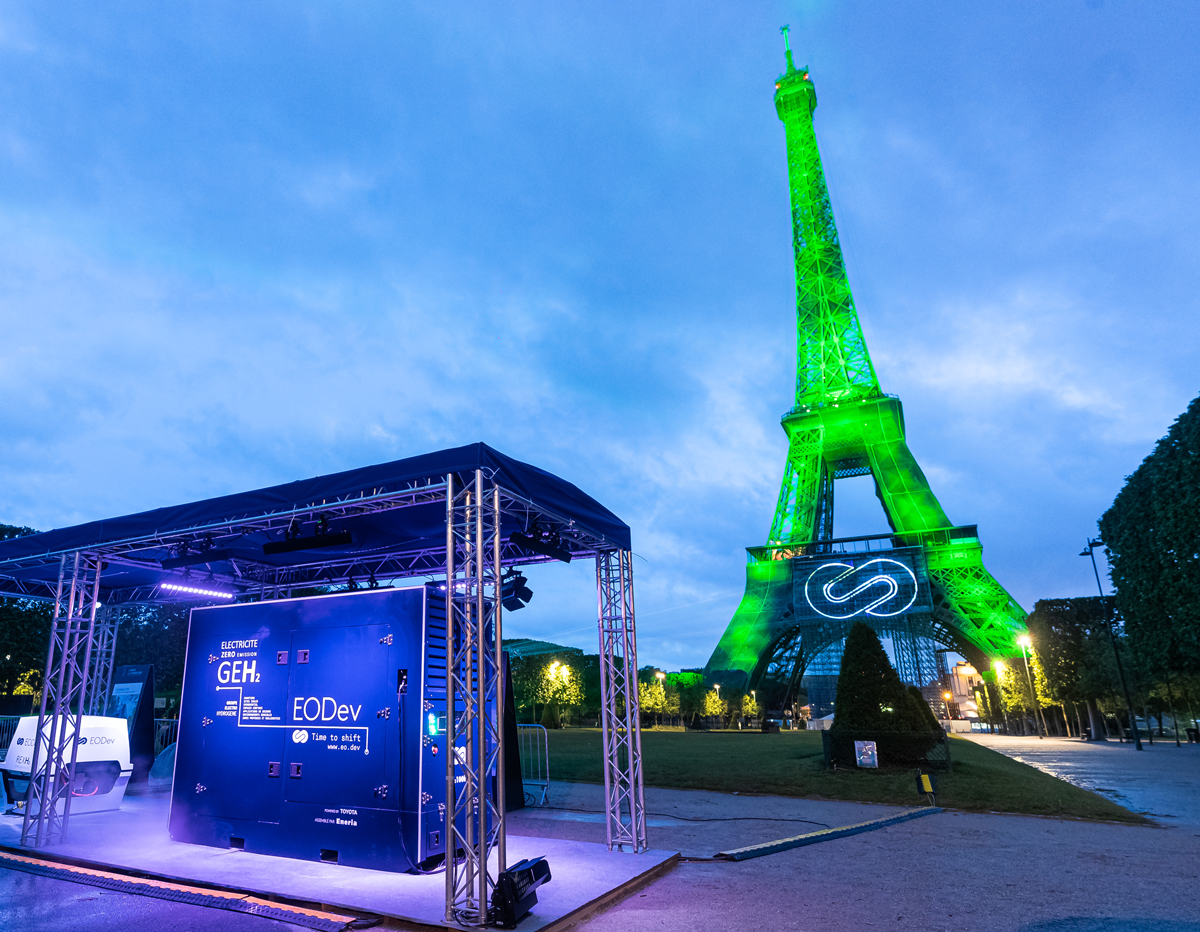
A world first: lighting up the Eiffel Tower with green hydrogen
While Energy Observer, the first autonomous and zero-emission hydrogen vessel, continues its journey around the world between California and Japan, its brand new exhibition village dedicated to renewable energies and hydrogen is active in Paris, on the Champ de Mars, near the Eiffel Tower, from May 20 to 30, 2021. The ambition of this major exhibition is clear: to show that the development of renewable energies, green hydrogen in particular, and smart computer systems are a concrete and immediate response to the climate emergency.
It is in this context that EODev set up in the heart of the Energy Observer village to give a full-scale demonstration of the performance and potential use of its first GEH₂® electro-hydrogen power generator. The exhibition space is thus supplied with clean electricity thanks to a fuel cell running on hydrogen, which produces energy without any emission of CO₂ and fine particles, without smells and practically without noise. The GEH₂® only rejects water and heat.
The highlight of this concrete demonstration of the potential of EODev’s GEH₂® was to illuminate the Eiffel Tower only thanks to its carbon-free hydrogen. A feat never achieved before and a highly symbolic one, which goes down in the history of technical progress that has allowed the Iron Lady to shine every night since its inauguration 132 years ago (on March 31, 1889) when thousands of gas lamps were installed in opalescent globes to draw her outlines. It was then the shift to the continuous supply of electricity from the Universal Exhibition of 1900, with 5,000 bulbs, the number of which was increased to 25,000 in 1925, of several colors. The last major innovation came in 1985, with the installation, as part of the restoration campaign, of 336 sodium lamps inside the structure. Designed by Pierre Bideau, a lighting engineer, this device produces a spectacular effect because the tower itself becomes a source of light. It was supplemented as of January 1st, 2000 by 20,000 scintillating flashes.
For a quick overview of the performance, see our LinkedIn page: https://www.linkedin.com/posts…
Jérémie Lagarrigue, CEO, EODev, commented on the achievement, “Our solution brings the lighting of the Eiffel Tower into a new era of technological and sustainable progress. We believe this initiative will be followed by many others where future events can be celebrated with clean energy. We expect the most beautiful monuments in France and elsewhere will be illuminated thanks to sustainable energy solutions. Beyond their symbolic significance, these initiatives, such as EODev’s GEH₂®, highlight zero-emission solutions that are already operational today.”
The GEH₂® : packed with technology
Coupled with a 44kWh buffer battery designed by EVE System which makes it possible to manage power peak requests, the fuel cell which equips the GEH₂® is a module similar to the one developed by Toyota for its Mirai, which was also specially adapted by EODev engineers in collaboration with Toyota in 2019 and installed on board the Energy Observer boat.
Developing 60kW, this electro-hydrogen power generator has a double adduction system and all the connections needed for remote monitoring of its performance and components. The GEH₂® is connected to standardized hydrogen tanks – which were, for the occasion, filled with hydrogen certified from renewable sources by Air Liquide – so as to be able to supply the village with energy in all circumstances. The record energy density of the GEH₂® allows it to consume only 3.5kg of hydrogen per hour when delivering 60kW, making it the most efficient generator on the market in its category.
Ideal for supplying clean energy to mobile and / or temporary events, such as concerts or on construction sites, the GEH₂® also finds its full raison d’être in the supply of back-up or emergency power on sensitive installations (hospitals, data centers …) or for “off-grid” and isolated areas, such as high mountain refuges, relay antennas, islands, mines or tunnels, etc.
Its industrialization is underway, on the ENERIA site in Monthléry, and the first mass-produced units are scheduled for early 2022. However, it is already possible to take advantage of an operational GEH₂® thanks to equipment rental company LOXAM, which provided the Energy Observer village with its first unit for this event.
